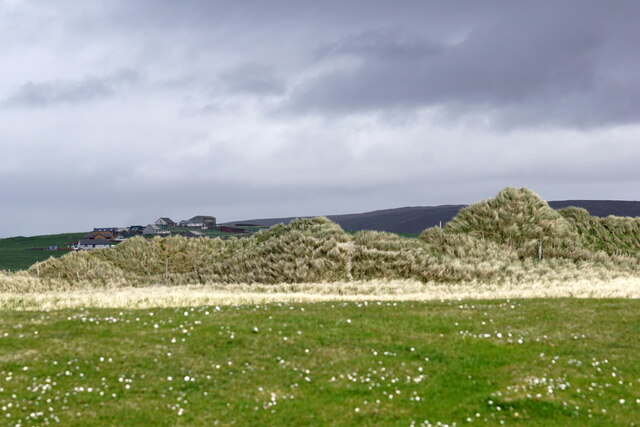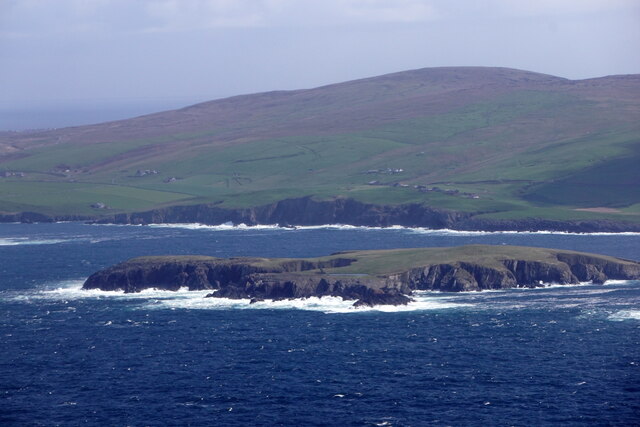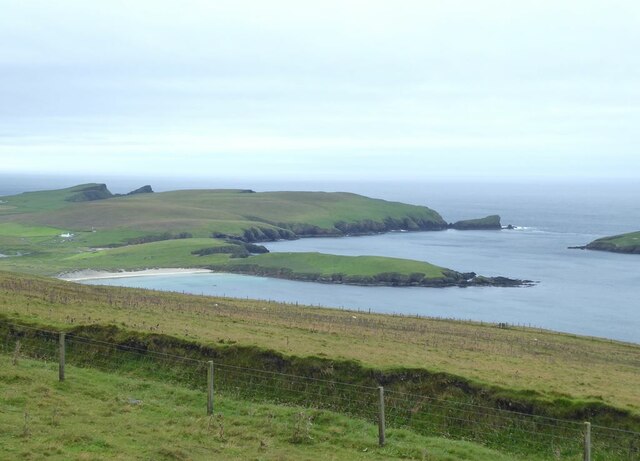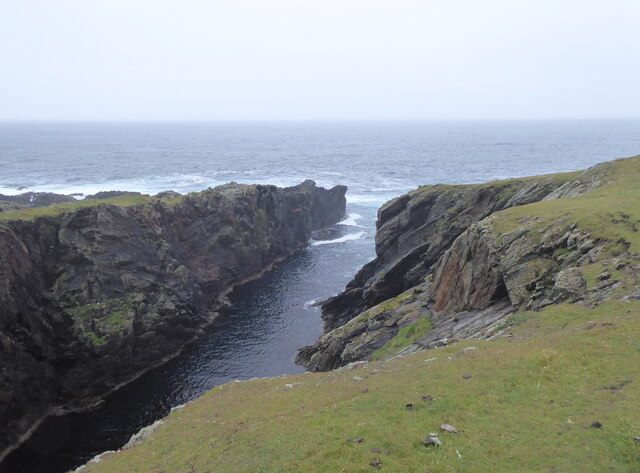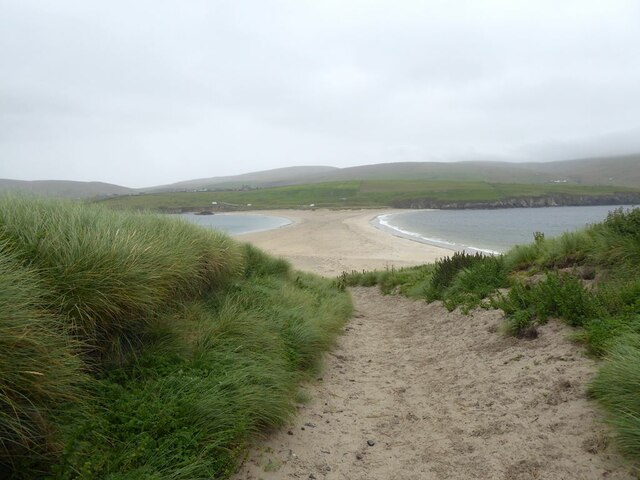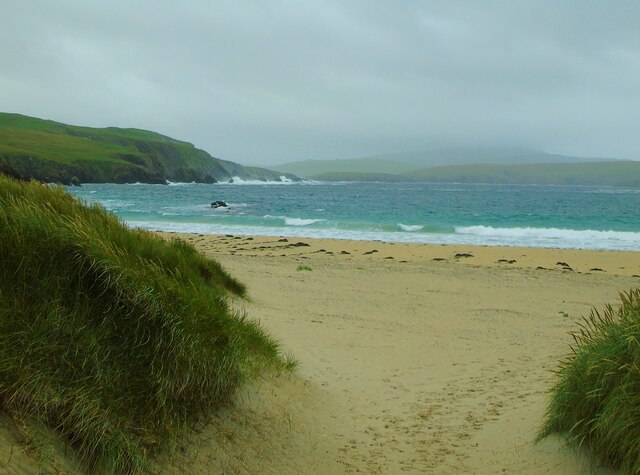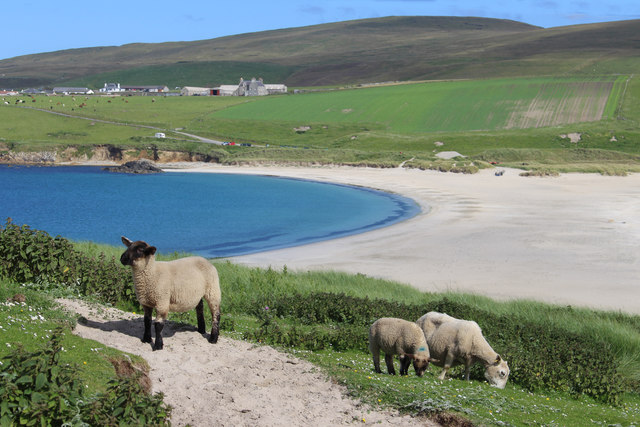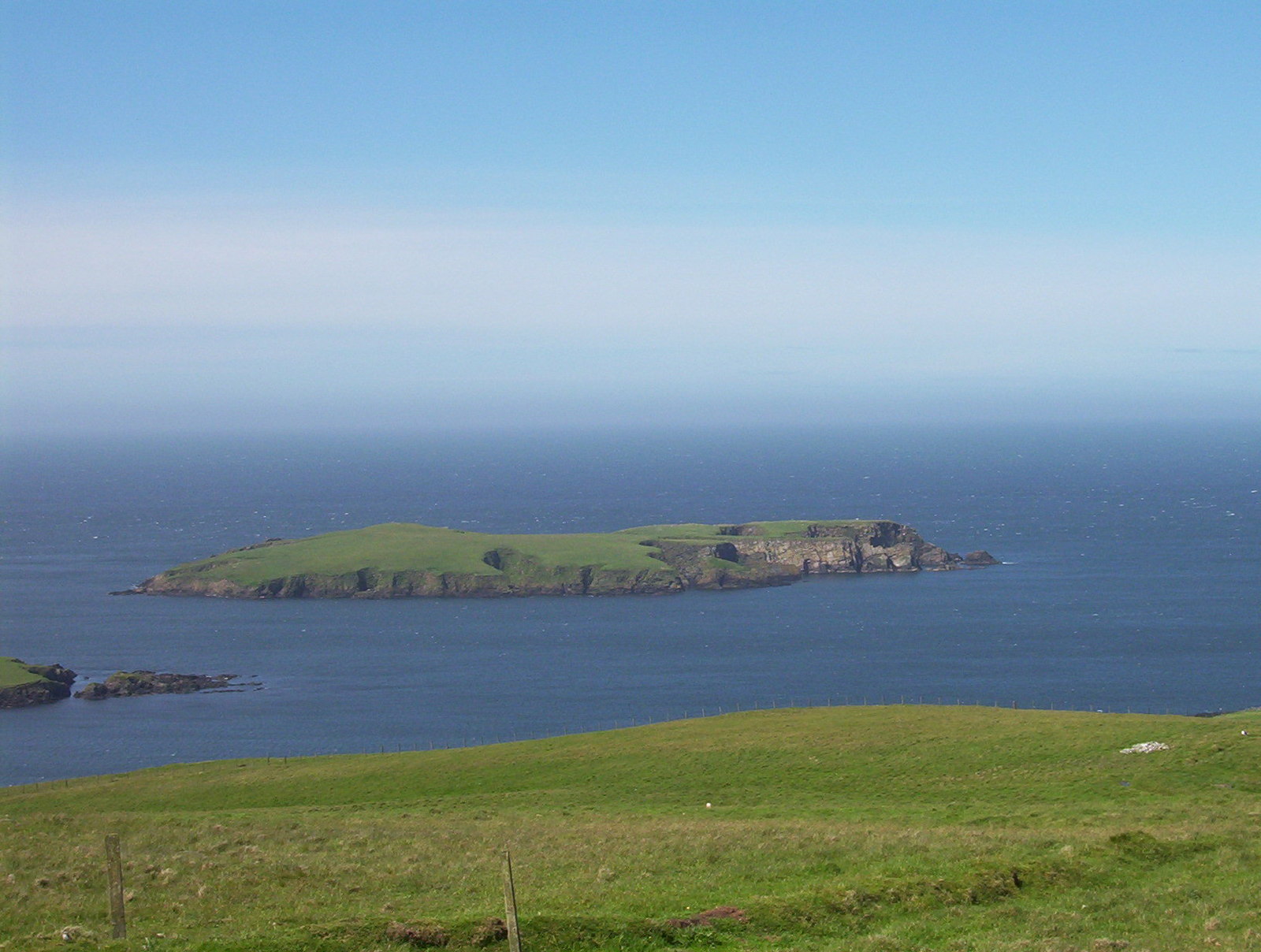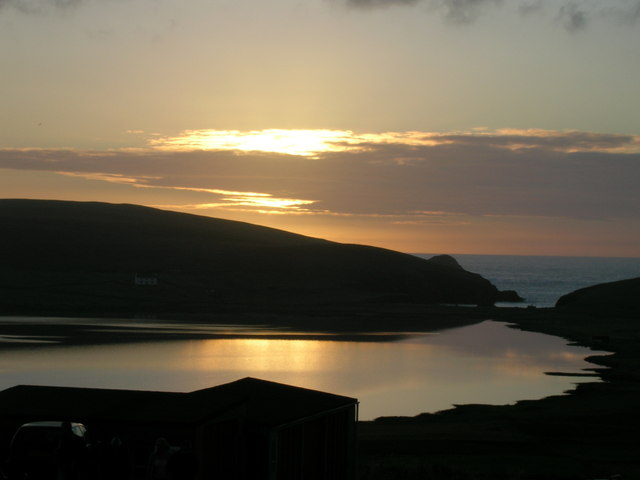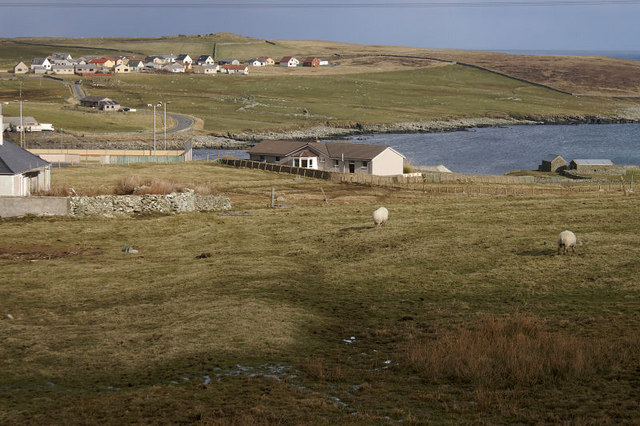Ox Geo
Coastal Feature, Headland, Point in Shetland
Scotland
Ox Geo
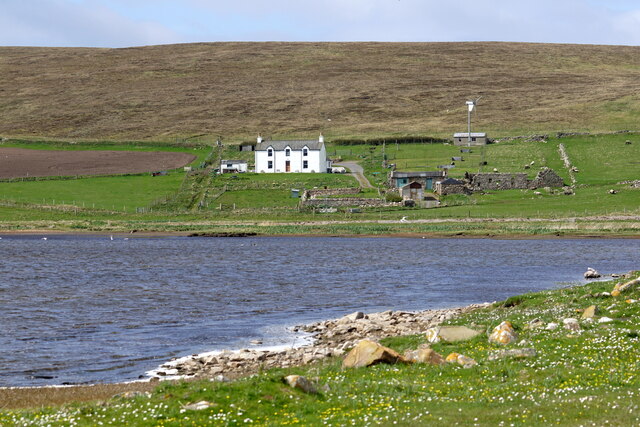
Ox Geo is a prominent coastal feature located on the Shetland Islands, Scotland. It is specifically situated on the West Mainland, near the village of Walls. Ox Geo is a headland, jutting out into the North Atlantic Ocean, and it is also commonly referred to as "Ox Head" or "Ox Headland."
This headland is characterized by its rugged and dramatic cliffs, which rise steeply from the sea. The cliffs at Ox Geo are composed of various types of rock, such as sandstone and shale, giving them a distinctive layered appearance. These geological formations have been shaped by the relentless forces of erosion over thousands of years, resulting in the creation of caves, arches, and stacks along the coastline.
The name "Ox Geo" is believed to have originated from the Old Norse word "geirr," meaning "a triangular piece of land." This name accurately describes the triangular shape of the headland, which extends out into the ocean.
Ox Geo is a popular destination for tourists and nature enthusiasts due to its stunning natural beauty and rich biodiversity. The cliffs provide nesting sites for a variety of seabirds, including puffins, guillemots, and fulmars. The surrounding waters also support a diverse marine ecosystem, making it a haven for seals and otters.
Visitors to Ox Geo can enjoy breathtaking views of the surrounding coastline, as well as opportunities for coastal walks and birdwatching. It is advisable to exercise caution when exploring the area, as the cliffs can be unstable, and the strong currents of the Atlantic Ocean make swimming dangerous.
In summary, Ox Geo is a captivating headland on the Shetland Islands, boasting striking cliffs, diverse wildlife, and picturesque views, making it a must-visit destination for nature lovers and adventure seekers.
If you have any feedback on the listing, please let us know in the comments section below.
Ox Geo Images
Images are sourced within 2km of 59.954445/-1.3563768 or Grid Reference HU3619. Thanks to Geograph Open Source API. All images are credited.



Ox Geo is located at Grid Ref: HU3619 (Lat: 59.954445, Lng: -1.3563768)
Unitary Authority: Shetland Islands
Police Authority: Highlands and Islands
What 3 Words
///fastening.comedians.cackling. Near Sandwick, Shetland Islands
Nearby Locations
Related Wikis
Colsay
Colsay is an uninhabited island off the South West coast of Mainland, Shetland. Fora Ness lies to the south, across the Muckle Sound. The highest elevation...
St Ninian's Isle
St Ninian's Isle is a small tied island connected by the largest tombolo in the UK to the south-western coast of the Mainland, Shetland, in Scotland. It...
Scousburgh
Scousburgh is a small community in the parish of Dunrossness, in the South Mainland of Shetland, Scotland, overlooking the picturesque Scousburgh Sand...
Lochs of Spiggie and Brow
The Lochs of Spiggie and Brow are located west of Boddam in the parish of Dunrossness, in the South Mainland of Shetland, Scotland, about 6 km north of...
Bigton
Bigton is a small settlement on South Mainland, Shetland, UK. Bigton is within the civil parish of Dunrossness.Bigton lies on the Atlantic coast of the...
Dunrossness
Dunrossness, (Old Norse: Dynrastarnes meaning "headland of the loud tide-race", referring to the noise of Sumburgh Roost) is the southernmost parish of...
Clumlie Broch
Clumlie Broch is an Iron Age broch located on Mainland, Shetland, in Scotland (grid reference HU40451811). == Location == Clumlie Broch is located in Dunrossness...
Boddam, Shetland
Boddam is a village on the island of Mainland, in Shetland, Scotland. Boddam is an area of Dunrossness in the South Mainland of Shetland. Although Boddam...
Have you been to Ox Geo?
Leave your review of Ox Geo below (or comments, questions and feedback).
